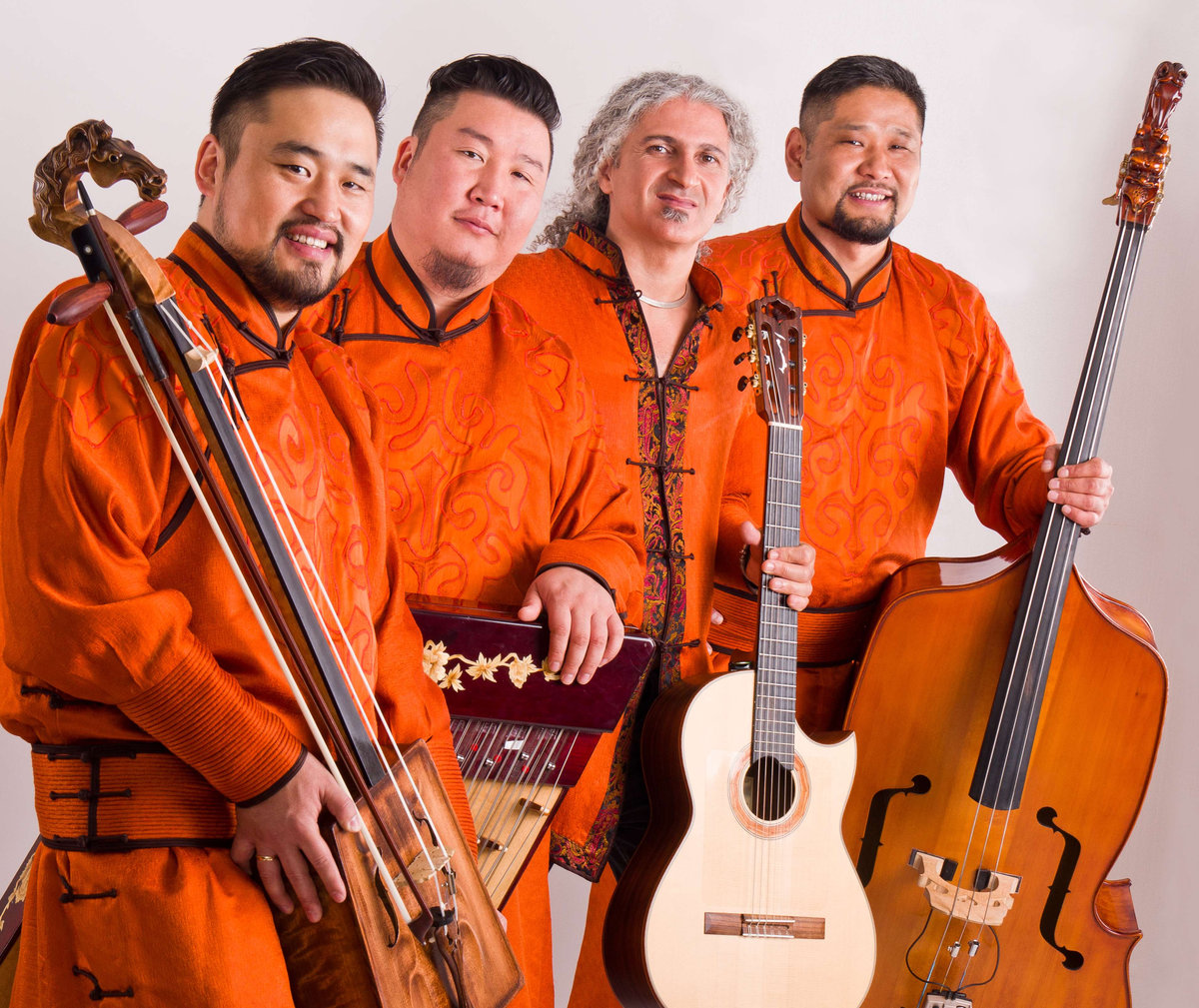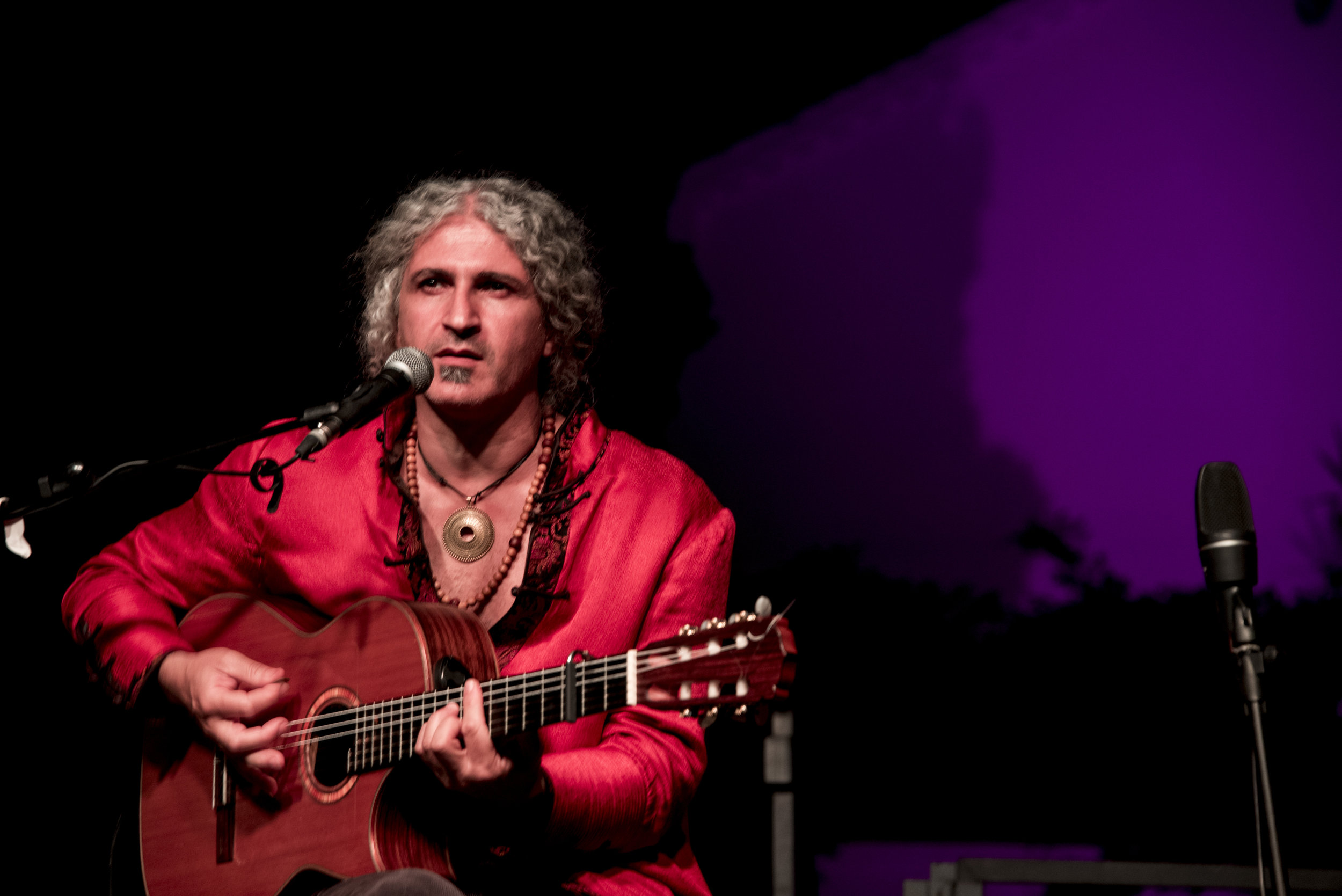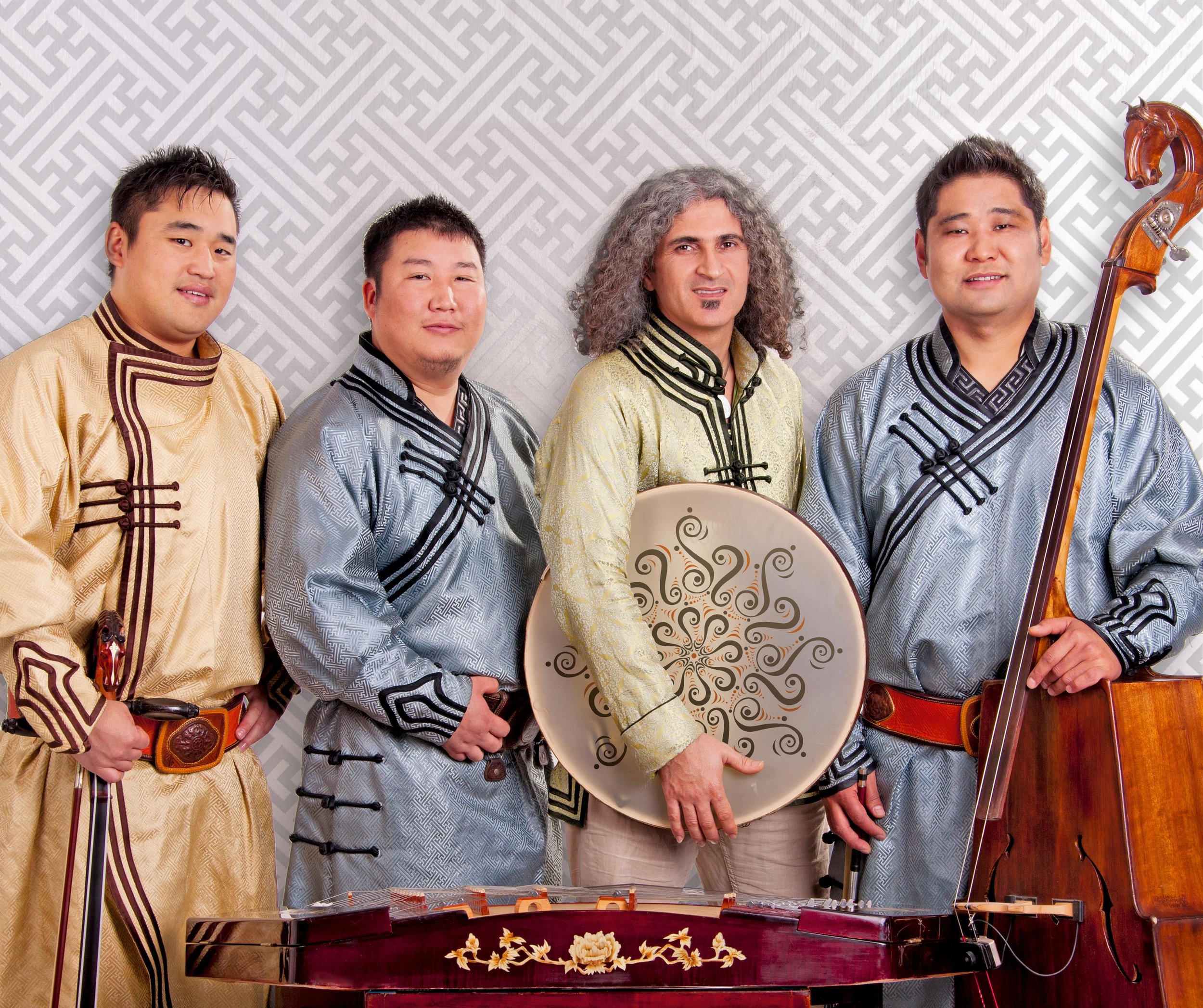SEDAA– Mongolia/irAN–
Sedaa means "voice" in Persian and connects traditional Mongolian music with the Orient which makes an extraordinary and fascinating sound.
Master singer Nasaa Nasanjargal and Naraa Naranbaatar who studied in their Mongolian homeland, abduct you together with the virtuosic Dulcimer player Ganzorig Davaakhuu and the Iranian Multi-instrumentalist Omid Bahadori into one genuinely exotic world between Orient and Mongolian steppe.
The base of their modern composition is formed by natural sounds which are produced with traditional instruments and the use of old age song technologies of their nomadic ancestors with which a person produces several tones at the same time. Vibrating undertone vocals and the amazing harmonic singing Hömii with the company of the melancholy sounds of the horse head violin Morin Khuur and the pearly sounds of the 120 strings hammered Dulcimer melt into the pulsating oriental drum rhythms to one mystical sound. With acoustically balanced titles, "Sedaa" presents live an innovative marvelous Sound. The wild rhythmic songs, like the "trotting of the horses", or the tender played ballads take the listener on a journey in the wide landscape of nature.
Mongolia is one of the Asian countries with a big list of Intangible Cultural Heritage (ICH) that are considered by UNESCO to be part of a place's cultural heritage. Among this, we can mention the ‘Traditional Music of morin khuur”, that was inscribed in 2008 on the Representative List of the Intangible Cultural Heritage of Humanity (originally proclaimed in 2003). The two-stringed fiddle morin khuur has figured prominently in Mongolia’s nomad culture. String instruments adorned with horse heads are attested to by written sources dating from the Mongol empire of the XIII and XIV centuries. Morin khuur is considered a national symbol.
Khöömei is a form of singing originating in western Mongolia, in the Altai mountains. The performer imitates sounds of nature, simultaneously emitting two distinct vocal sounds: along with a continuous drone, the singer produces a melody of harmonics. Khöömei literally means pharynx, and it is believed to have been learned from birds, whose spirits are central to shamanic practices. Khöömei is also inscribed in 2010 on the Representative List of the Intangible Cultural Heritage of Humanity.
SEDAA has released 4 albums: “Sedaa” (2018), “New ways” (2012), “Letter from Mongolia” (2011) and “Mongolian meets Oriental” (2009). They have been performing in some of the most prestigious venues and festivals around Europe, Asia or Latin America such us: Rudolstadt – TTF Festival (Germany), Global Village Festival (The Netherlands), Haapavesi Folkfestival (Finlandia), Samarkand International Music Festival (Uzbekistan), Asian Arts Festival (China), Festival de Música Sacra (Colombia), Festival de Músicas del Mundo de Toledo or Festival Internacional de Música y Danza de Granada (Spain)
LINE - UP :
Naraa Naranbaatar Ikh Khuur, Kargyraa, Khöömii
Nasaa Nasanjargal Morin Khuur, kargyraa, Khöömii, bischgur and dombra
Omid Bahadori Guitarra, cajón, persussions, kargyraa
Ganzorig Davaakhuu Yochin (Dulcimer mongol 120 strings), kargyraa






